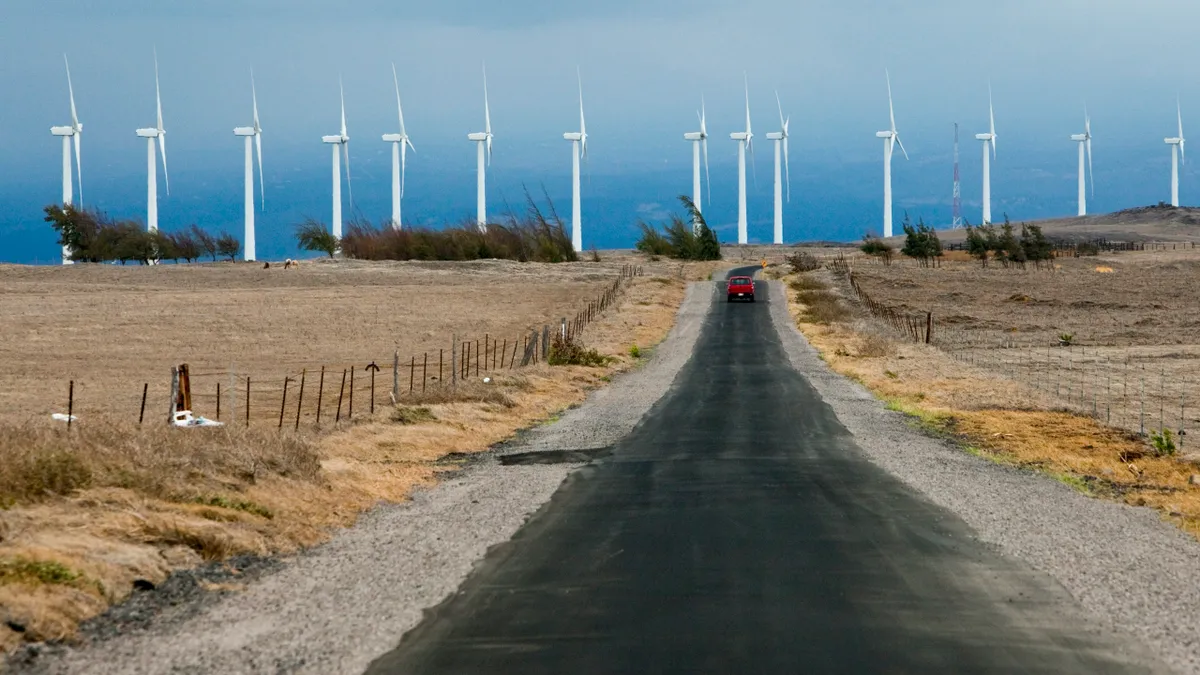Dive Brief:
- There are currently about 18,200 MW of wind projects in various stages of development, including more than 12,450 MW now under construction, according to the American Wind Energy Association's second quarter report on the state of the industry.
- Major utilities announced 3,000 MW in new construction in Q2, AWEA said, an almost 25% increase over first quarter announcements.
- While Kansas led the nation in new construction announcements at 778 MW, Texas led installations with about 200 MW between April and June. Total installed capacity during that period was 310 MW from 169 turbines, AWEA said.
Dive Insight:
So far this year the United States has installed 830 MW of wind power, but that figure is set to accelerate as larger utility-scale projects begin to dominate.
In total, according to AWEA's U.S. Wind Industry Second Quarter 2016 Market Report, the United States has installed wind capacity of 74,821 MW.
The industry installed 169 wind turbines across four states during the second quarter, representing 310 MW of capacity. Texas led the country with 200 MW of wind capacity installed, followed by Kansas (72 MW), Nebraska (36 MW), and a single turbine installation in Iowa. Across the U.S., cumulative year-to-date installations total 830 MW. The U.S. now has an installed wind power capacity of 74,821 MW.
Wind energy currently supplies about 5% of generation in the United States, but that will rise to 10% by 2020 and 20% by 2030, according to AWEA.
And as the industry grows, the group said it expects project size to increase as well. Utilities announced more large scale wind power investments during the second quarter, including MidAmerican Energy's 2,000 MW Wind XI project in Iowa and Xcel Energy's plan to develop 600 MW at Rush Creek in Colorado.
The group noted that popularity of wind energy is growing around the country as well. A Gallup poll in March showed almost three-quarters of adults say the federal government should emphasize wind and solar development, while a Lazard's poll from the same period showed nine in 10 likely voters favor expanding the resource.














